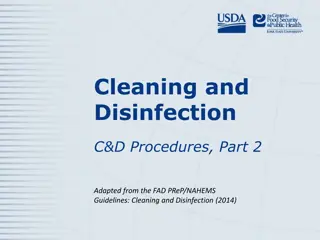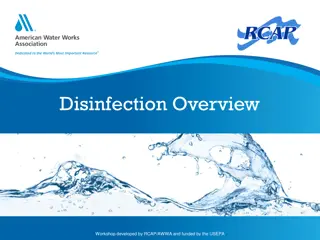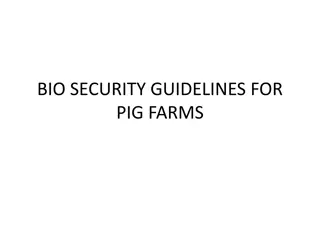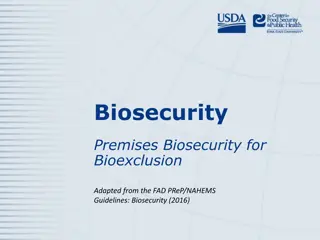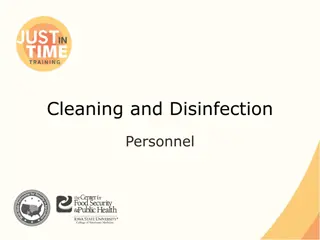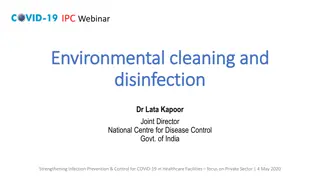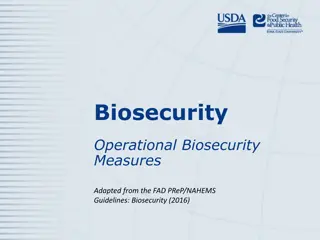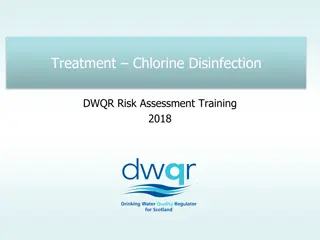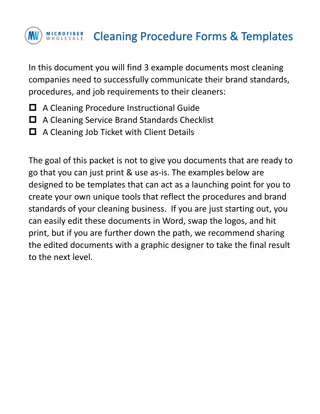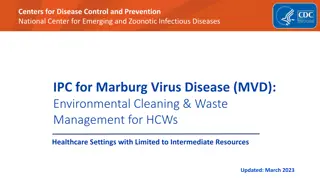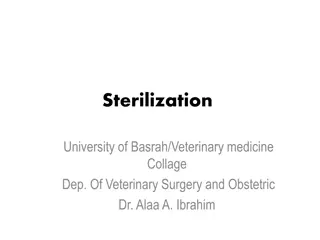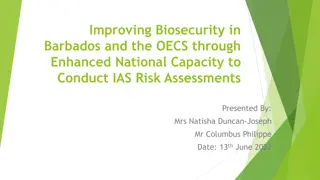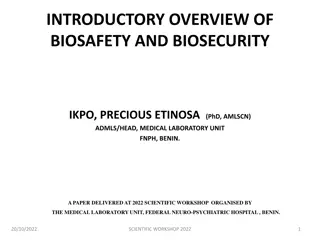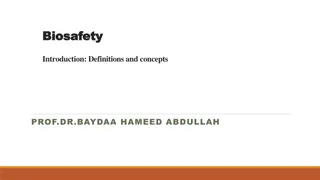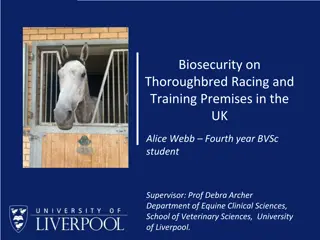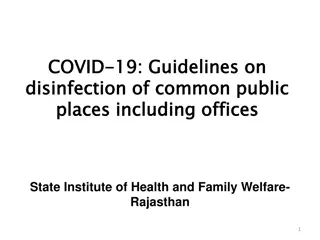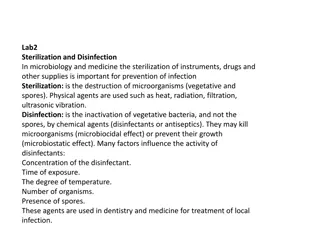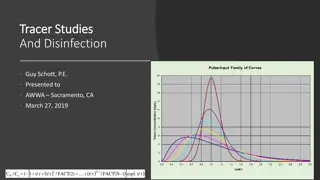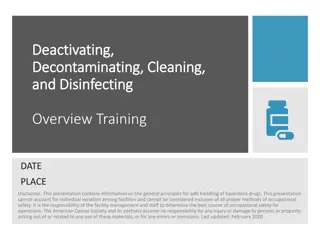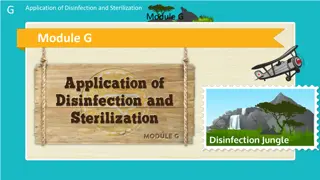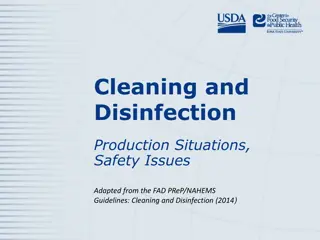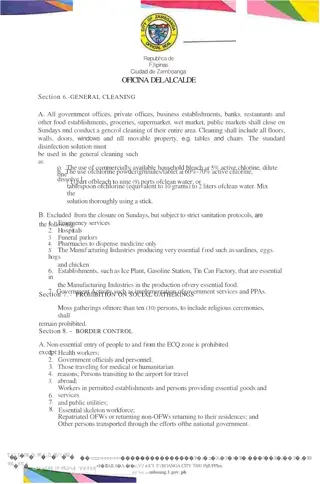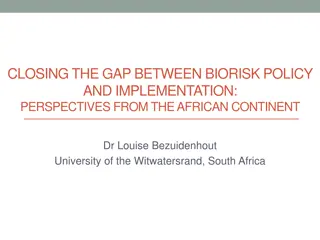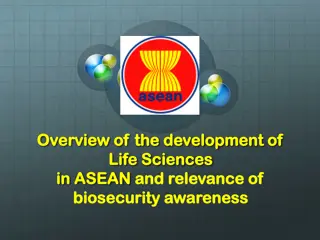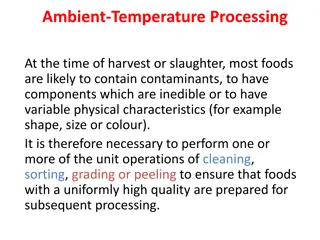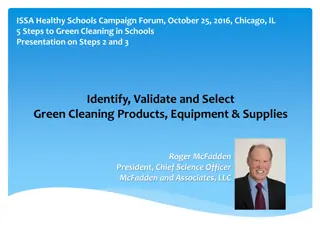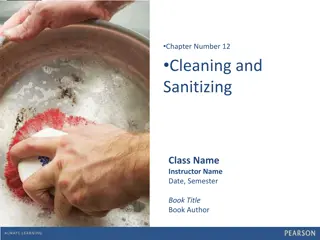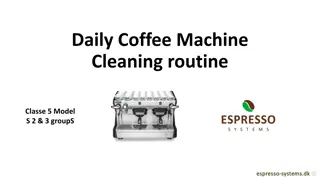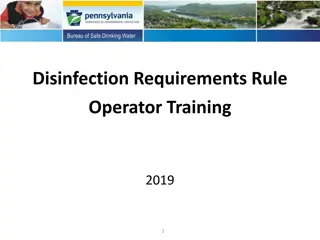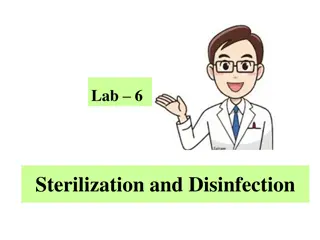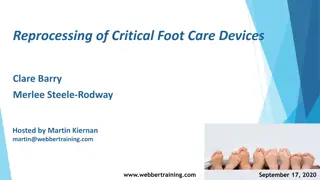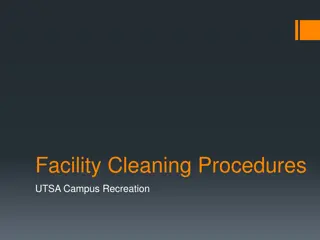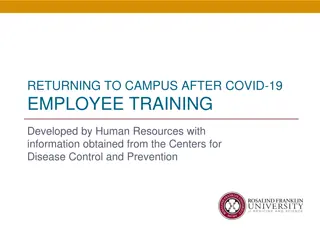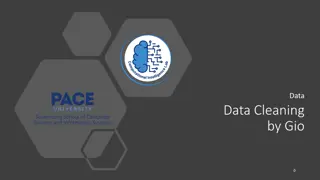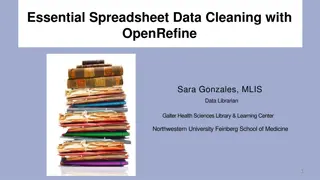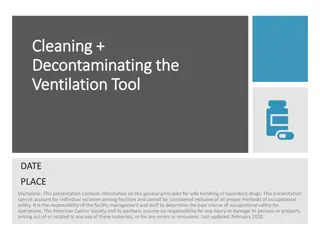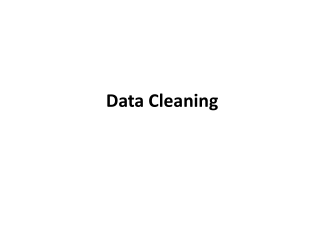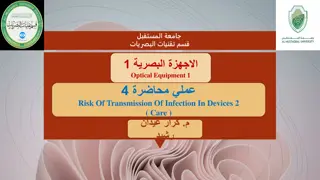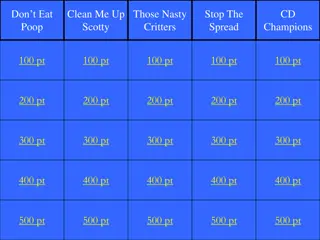Biosecurity Cleaning and Disinfection Guidelines
The presentation covers the essential components of biosecurity plans, focusing on Cleaning and Disinfection (C&D) as well as Biosecurity Attire/Personal Protective Equipment (PPE). It includes detailed information on C&D methods, processes, and factors affecting disinfecting efficacy, as per the FAD PReP/NAHEMS Guidelines.
Download Presentation

Please find below an Image/Link to download the presentation.
The content on the website is provided AS IS for your information and personal use only. It may not be sold, licensed, or shared on other websites without obtaining consent from the author. Download presentation by click this link. If you encounter any issues during the download, it is possible that the publisher has removed the file from their server.
E N D
Presentation Transcript
Biosecurity Components C&D and Biosecurity Attire/PPE Adapted from the FAD PReP/NAHEMS Guidelines: Biosecurity (2016)
This Presentation Two common components of biosecurity plans Cleaning and disinfection (C&D) Biosecurity attire/personal protective equipment (PPE) FAD PReP/NAHEMS Guidelines: Biosecurity - Components USDA APHIS and CFSPH
Cleaning and Disinfection (C&D) FAD PReP/NAHEMS Guidelines: Biosecurity - Components USDA APHIS and CFSPH
Cleaning and Disinfection (C&D) C&D in some form is conducted prior to crossing from dirty to clean areas Perimeter Buffer Area Remove all organic material Personnel arrive clean, or clean footwear and don site-specific outerwear Line of Separation (C&D Line) Reduce, remove, inactivate, eliminate, or destroy pathogenic microorganisms FAD PReP/NAHEMS Guidelines: Biosecurity - Components USDA APHIS and CFSPH
Cleaning/Disinfection Methods Physical Sweep, scrape, heat, or ultra-violet light Chemical Detergents, sanitizers, disinfectants, or sterilants Disinfectants are less effective in the presence of organic load First clean to remove organic material FAD PReP/NAHEMS Guidelines: Biosecurity - Components USDA APHIS and CFSPH
Cleaning Process Dry clean scrape, brush Wash within the C&D area Contain run-off Observe all safety protocols Use detergent on surfaces Rinse with clean water Allow to dry before disinfecting FAD PReP/NAHEMS Guidelines: Biosecurity - Components USDA APHIS and CFSPH
Disinfecting Efficacy of processes vary Susceptibility of microorganisms vary Other factors Water hardness, chemical interactions and corrosion, organic material Type of surface and material Contact time Practicality FAD PReP/NAHEMS Guidelines: Biosecurity - Components USDA APHIS and CFSPH
Disinfecting Process Prepare fresh supply Apply to all cleaned surfaces Use high pressure sprayers with caution Maintain appropriate contact time Reapply if necessary Rinse with clean water Allow to dry FAD PReP/NAHEMS Guidelines: Biosecurity - Components USDA APHIS and CFSPH
Disinfection Heat Treatment Acceptable for pathogen elimination in certain circumstances Dry cleaning followed by heat Used during HPAI 2014 2015 and 2016 outbreaks Balance of time, temperature, and environmental factors Ensure efficacy FAD PReP/NAHEMS Guidelines: Biosecurity - Components USDA APHIS and CFSPH
Biosecurity Attire/ Personal Protective Equipment (PPE) FAD PReP/NAHEMS Guidelines: Biosecurity - Components USDA APHIS and CFSPH
Biosecurity Attire Prevent disease exposure via contaminated street clothes Leave street clothes on dirty side, or cover with clean outerwear Disposable gloves and boots, reusable boots (C&D), change of clothes Facility-provided outerwear In preparation for crossing the Line of Separation FAD PReP/NAHEMS Guidelines: Biosecurity - Components USDA APHIS and CFSPH
Personal Protective Equipment (PPE) PPE is standard in an FAD response Barrier to protect the responder Prevents spread of pathogens via clothing acting as a fomite Disposable PPE is preferred FAD PReP/NAHEMS Guidelines: Biosecurity - Components USDA APHIS and CFSPH
PPE Selection and Use Correct selection, use, C&D/disposal Selection/level of protection based on risks, tasks, and pathogen Proper sequence of donning/putting on and doffing/taking off is essential Protect the wearer Prevent spread of the hazard Avoid cross contamination when doffing FAD PReP/NAHEMS Guidelines: Biosecurity - Components USDA APHIS and CFSPH
Levels of PPE OSHA classifies PPE into four levels Level D (lowest protection) to Level A (highest protection) Levels D and C = biosecurity attire/PPE Level based on OSHA, CDC, and APHIS guidance Decisions by the Safety Officer, guided by incident-specific HASP FAD PReP/NAHEMS Guidelines: Biosecurity - Components USDA APHIS and CFSPH
PPE Considerations Interference with normal range of motion Time limitations Risks of overheating Danger of falling Recognize warning signs of physical stress FAD PReP/NAHEMS Guidelines: Biosecurity - Components USDA APHIS and CFSPH
Conclusion Biosecurity tools for disease mitigation C&D Two separate steps Prior to moving from dirty to clean Contain/exclude Environmental decontamination Biosecurity attire/PPE Avoid acting as a fomite FAD PReP/NAHEMS Guidelines: Biosecurity - Components USDA APHIS and CFSPH
For More Information FAD PReP/NAHEMS Guidelines & SOP: Biosecurity (2016) http://www.aphis.usda.gov/fadprep Biosecurity web-based training module: http://naherc.sws.iastate.edu/ FAD PReP/NAHEMS Guidelines: Biosecurity - Components USDA APHIS and CFSPH
Guidelines Content Authors (CFSPH) Janice P. Mogan, DVM Heather Allen, PhD, MPA Kristen Bretz, MS Reviewers (USDA) Jonathan T. Zack, DVM James A. Roth, DVM, PhD, DACVM FAD PReP/NAHEMS Guidelines: Biosecurity - Components USDA APHIS and CFSPH
Acknowledgments Development of this presentation was by the Center for Food Security and Public Health at Iowa State University through funding from the USDA APHIS Veterinary Services PPT Authors: Janice P. Mogan, DVM; Logan Kilburn Reviewer: Kristen Bretz, MS


